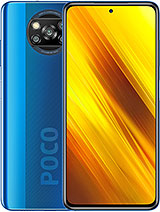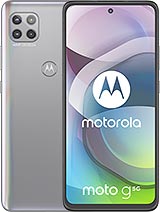Xiaomi Redmi Note 10 review

Competition
The Redmi Note 10 appears to be in a sweet spot, at least in most markets and at this time of the year. The price of the phone will eventually fall in the coming months, which would only make it even more desirable. But what about current competition, what are your alternatives? Well, most of the options are slightly pricier, and only a handful of cheaper devices are worth consideration.

The Xiaomi Poco X3 NFC is a close sibling to the Redmi Note 10, going for about €20-30 less, which means that it can be found for roughly €170-180. If you are not particularly into OLED panels (we know some of you are not), the X3 NFC is an excellent option. And as the name implies, it has NFC. The Poco X3 has another trick up its sleeve - 120Hz refresh rate. You probably won't be able to utilize it in all games, but it does enhance the overall user experience. The device's stereo speakers are also a tad louder.
Another big advantage of the X3 is the longer battery life, especially in standby and web browsing. More importantly, the X3 runs on a significantly more powerful Snapdragon 732G. At the end of the day, the difference in size can solve this dilemma - the Poco X3 NFC comes with a considerably bigger 6.67-inch screen diagonal, so it's not as pocketable as the Redmi Note 10.




Xiaomi Poco X3 NFC • Motorola Moto G 5G Plus • Motorola Moto G 5G • Xiaomi Redmi Note 10 Pro
Now, moving up the price bracket, we start to see some more popular options from Motorola. But those two recommendations are rather tricky. The Moto G 5G and the Moto G 5G Plus are both within the price segment, with the former being a direct rival to the Redmi Note 10 as it's priced at around €220. On the other hand, we were able to find the undoubtedly better Moto G 5G Plus for a little over €230 at the time of writing this review whereas it's usual price falls between €250 and €260. So it pays to shop around.
The Moto G 5G Plus will feel much faster with its Snapdragon 765G SoC and also give you a 90Hz display as a bonus, albeit an LCD. Battery life is similar, charging is slower, and it doesn't have a set of stereo loudspeakers.
Most of what we said about the Plus model applies to the non-Plus variation as well. Sure, there's no 90Hz display, but the chipset is again more powerful, battery life is longer, and the screen is considerably bigger. In case the latter is a factor when choosing a phone. In any case, one of the main appeals of both handsets is having a rather clean Android with a couple of added features on top. Don't forget the NFC too, both Motorola's have NFC - something the Redmi Note 10 lacks.

Finally, we can't end this review without mentioning the Redmi Note 10's more expensive and bigger sibling - the Redmi Note 10 Pro. Priced at around €280, the Pro seems to offer a slew of premium features like a 108MP main camera, 120Hz, HDR10-capable OLED display, a more competent Snapdragon 732G SoC, Gorilla Glass 5 protection, more base RAM (4GB vs. 6GB) and louder, better-sounding stereo loudspeakers. NFC is also available for select markets. Those are some compelling arguments to shell out an extra €80 for a phone, but not everyone would appreciate the HRR display or the Gorilla Glass 5 build, for example. It's a tough one, we admit. Xiaomi has done a really good job with the pricing and feature segregation. If the Pro was even a little cheaper, it would have been a no-brainer, and the Note 10 would have been doomed from the start.
Verdict
The Redmi Note 10 offers several key improvements over its predecessor, the Redmi Note 9, but some corners had to be cut. The bright OLED panel, the stereo loudspeakers, the IP53 certification and the faster charging, are arguably the most notable upgrades. However, the macro camera's autofocus, the reverse wired charging, the NFC and the Gorilla Glass 5 front panel were lost along the way. Moreover, this time around, the chipset doesn't feel adequate. The Snapdragon 678 is a fairly recent SoC but doesn't seem to be that much better than its predecessor (Snapdragon 675) either.

Nonetheless, the Redmi Note 10 is an excellent all-rounder offering some rare features for its price. Sadly, some deal-breaking cons could potentially get in the way of the device's success, and that's the missing NFC (meaning no contactless payments) and the rather unsatisfactory chipset performance.
Pros
- Compact and lightweight design with good ergonomics and IP53 certification
- Bright OLED panel with always-on display.
- Good camera performance during the day (ultrawide included), dependable Night mode after dusk.
- Good battery life and fast charging.
- Dedicated microSD card slot and IR blaster are rare to find.
- Feature-rich and mature MIUI 12 on top of Android 11.
- The loudspeakers are nice to have.
- Finally 4K video recording and decent one at that.
Cons
- The competition has more powerful SoCs.
- Missing some features from the predecessor - no Gorilla Glass 5, no AF for the macro cam, no reverse charging.
- No NFC.
Reader comments
- Anonymous
- 31 Mar 2025
- 3xJ
Bad cellphone. I got same this same model and I'm suffering. Most app can't be installed. It's always giving message that can't run on rooted device. I bought it new. Most apps I need for work and for important app like govt app.....
- Anonymous
- 24 Jan 2025
- j2a
Yes,it has dual apps function 👍
- Dj miles
- 30 Dec 2024
- NuU
Bought mine in 2022 redmi note 10s is still the best upgraded to version 13 this very year and its jus still workng wonders

